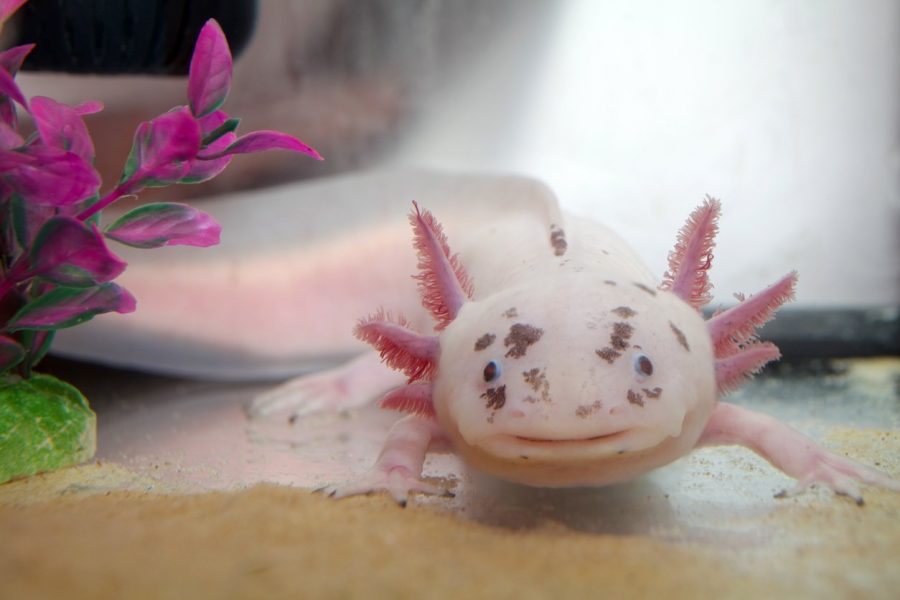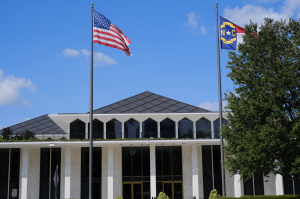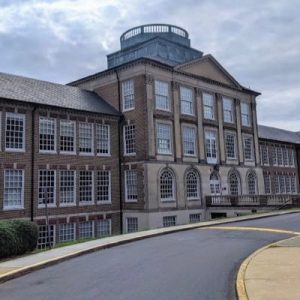Research Spotlight: Dr. Joshua Currie
Dr. Joshua Currie is studying axolotl DNA to uncover its mysterious regenerative abilities
Dr. Currie’s research, which centers on the genome of Mexican axolotls (Anvystoma mexicana), and is investigating the secret of their strange regeneration abilities.
March 11, 2021
The axolotl is a remarkably silly creature. Some people mistake it for a fish with legs, others find it distinctive by its pink pipe-cleaner haircut and others remember these amicable amphibians by their ever-goofy grins. Native to a few lakes in Mexico, the Mexican axolotl (Ambystoma mexicanum) is remarkable to biologists as well, especially for its incredible ability to grow — or to regrow, that is.
Biology professor Dr. Joshua Currie has taken a particular interest in these impressive amphibians and what makes them so special. His research involves trying to pinpoint the specific mechanisms that facilitate their unusual regenerative properties.
Axolotls have outstanding means of healing in response to severe physical stress. If someone cuts off an axolotl’s limb, its body can coordinate a response to regrow another fully functional one. If you crush a part of an axolotl’s spine, it can re-form that too. Remove parts of its brain and the axolotl can recover from even that.
Part of Curie’s research is determining how the axolotl’s regenerative process differs from that of other organisms. Many organisms form a scar when they undergo physical stress — axolotls take a more unconventional approach.
“Instead of the wound healing over and forming a scar, you actually get this accumulation of cells that we call a blastema,” Currie said. “That group of cells will go on to fully reconstitute the missing parts.”
Many hints about the axolotl’s regenerative process can be found in its DNA. By sifting through axolotl DNA using novel annotation and modification technologies (like CRISPR Cas-9), Currie’s lab is able to find links between regenerative processes and the instructions that guide them.
“Our big goal is to try to connect the genes that are involved in regeneration to the process [of regeneration] and how they function together,” Currie said.
The problem is that making sense of the axolotl’s genome is not a straightforward task. Genes are very interdependent, and silencing or removing genes often changes other cellular or organismal processes.
“You can remove something from an ecosystem and see that the whole thing collapses,” Currie said, “but it doesn’t necessarily tell you why or how.”
The complexity of the axolotl’s largely unannotated genome is a challenge, but it is also an opportunity. Currie says the genome provides many interesting questions.
“There are just so many questions we have,” said Currie. “There are so many wide-open things to look at.”
Currie also praised the role that Wake Forest’s Biology Department has had in supporting his research.
He mentioned that he is “really excited to be” at the university and that he thinks “that the strengths of the biology department and also Wake Downtown are really going to aid us in a successful launch” of his research.












